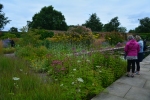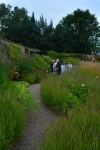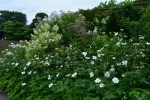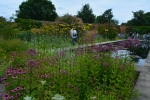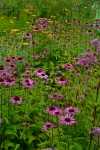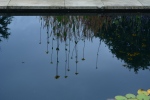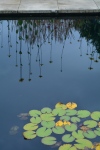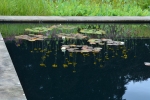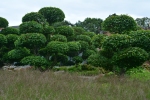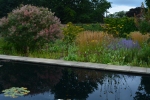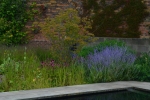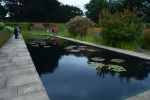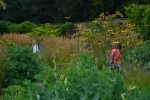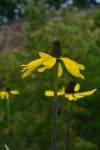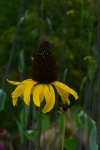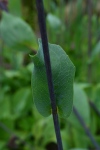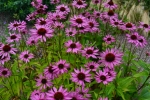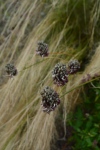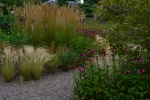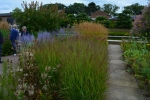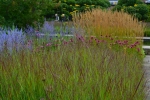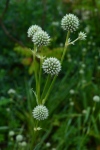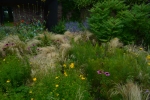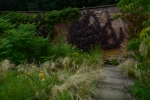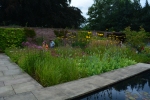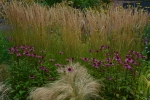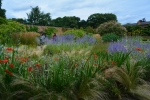As mentioned in my post about Ness Botanic Gardens themselves we were using the visit to study their many different Sorbus trees, to help us choose one for our garden. Here is a selection of those we found and liked. At the end of the post we shall share with you our shortlist drawn up during our visit.
The first cultivar which featured strongly in the carpark planting and around the garden was unusurpisingly Sorbus “Ness Pink”, a beautiful fastigiate structured tree with blue foliage and pale pink flowers. A stunning selection which immediately went onto our short list.
Next up was another neat tree with finely cut foliage and crisp yellow-orange berries, which was not labelled but later we found another that we thought was the same – Sorbus “Wisley Gold”. Another for the list!
Next ones we found in the pinetum were these deep pinkish berried trees, the one on the left is S. “Leonard Messell” and the other S.”Eastern Promise”.
We carried on in the woodland alongside the pinetum to find S. “Jospeph Rock” and S. coxii. We already have Joseph Rock growing at home and is a real favourite but we were not aware of coxii. It had the most beautiful glaucous foliage, but researching it is hard work as no-one seems to know much about it.
The pair that I photographed next were on the left S. discolor and on the right S. “Autumn Spire” which we already grow in our Avocet patch. Is a narrow upright tree with bright orang fruit looking fiery with red autumn colour.
Below are the next two Sorbus we came across and liked enough to photograph were sadly unlabelled. No help to us in seeking a selection for our garden. Good looking trees too!
We then were disappointed to find this pale yellow almost lemon berried tree had no label either. The one on the right is S. “Carmesina” a deep pink fruiting tree with pale glaucous foliage.
Two pink berried cultivars are featured next, the first with the palest pink possible, S.bulleyana, the second S. discolores with a deep blush to their pale pink.
At the end of the pinetum we came across a perfectly shaped rowan dripping with orange-yellow berries, Sorbus aucuparia “Dickeana”, a special specimen indeed.
We were delighted to discover on a grassed area on our return route to the centre among Betulas, a few more beautiful Sorbus, the red-leaved S. “Dodong Olympic Flame” and the more gentle S. Chinese Lace.
And to finish off a return to the magnificent Sorbus “Pink Ness”.
So what were the varieties that made it onto our short list? Here as promised is our selection from which we must seek out and purchase just one.
You may have guessed that Pink Ness is there, plus Chinese Lace, Dodong Olympic Flame and Wisley Gold. Great selection – hope you agree.
































































